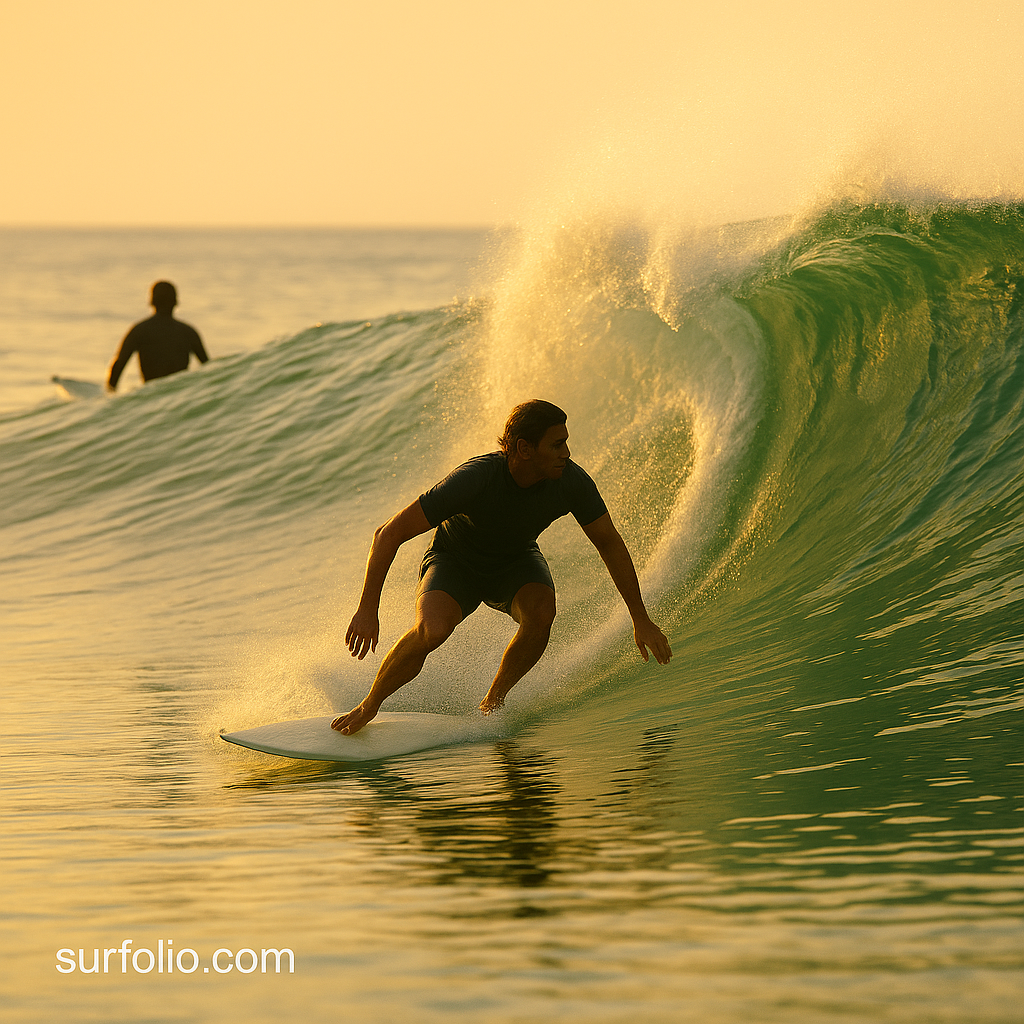
What Does “Dropping In” Mean?
“Dropping in” happens when one surfer takes off on a wave that another surfer already has priority on — essentially cutting them off mid-ride. It’s the surfing equivalent of running a red light, and it’s one of the quickest ways to create tension or collisions in the lineup.
Understanding and avoiding this mistake isn’t just about etiquette — it’s about safety, respect, and flow.
The Rule: Closest to the Peak Has Priority
The basic rule of surfing etiquette is simple:
The surfer closest to the breaking part of the wave (the peak) has the right of way.
If you’re paddling for a wave and see someone already up and riding closer to the curl, it’s their wave — even if you’re deeper on the shoulder. Wait your turn, or look for the next one coming.
This rule helps keep everyone safe and gives each surfer a fair chance to ride cleanly.
How to Recognize Priority in the Lineup
- Watch the Peak: See where the wave starts to break first — that’s where the priority surfer will take off.
- Make Eye Contact: Before paddling, glance toward nearby surfers to confirm intentions.
- Listen: Many surfers communicate with quick calls like “Left!” or “Right!” before takeoff.
- Be Aware of Position: If you’re sitting wide or inside, wait until others have cleared before dropping in.
Why Dropping In Is Dangerous
A dropped-in wave can lead to:
- Board collisions — serious injuries for both surfers.
- Broken boards or leashes — costly and avoidable.
- Ruined rides — wasted effort for the surfer with priority.
- Tension in the lineup — bad vibes that linger all session.
Surfing works best when everyone shares the same rhythm and respect. One careless drop-in can disrupt that balance.
Tips to Avoid Dropping In
1. Always Look Both Ways
Before you pop up, glance toward the peak. If another surfer is already standing or paddling closer to it, pull back.
2. Learn Wave Direction
If a wave is breaking left, the surfer on your right has priority — and vice versa. Knowing lefts vs rights prevents confusion.
3. Don’t Paddle for Every Wave
Be selective. Wait for your turn and respect rotation in the lineup. Surfing is about flow, not greed.
4. Practice Patience
It’s tempting to go for every set wave, especially on busy days. But waiting for the right one earns respect and often leads to a cleaner ride.
5. Apologize If You Slip Up
Mistakes happen. If you accidentally drop in, kick out immediately and offer a genuine apology. A little humility goes a long way in keeping peace in the lineup.
When It’s Okay to Share a Wave
There are exceptions — but only when both surfers communicate clearly:
- Party waves: Common among friends in small surf. Both riders agree to share the wave.
- Opposite directions: On a peak that breaks both left and right, two surfers can take off back-to-back (each riding their own side).
- Long waves: If the surfer ahead kicks out early, it’s okay to continue the ride.
When in doubt — don’t paddle in.
The Reward of Respect
Surfers who wait their turn earn trust. Over time, the lineup becomes friendlier, safer, and more enjoyable. Respecting priority also helps you learn wave selection, positioning, and timing — all key to improving faster.
Final Thoughts
Avoiding drop-ins is about more than following rules — it’s about keeping the surfing spirit alive. Every surfer remembers the joy of their first clean ride. Respect that feeling in others, and you’ll always belong in any lineup.
Good vibes travel faster than waves — share them freely.
